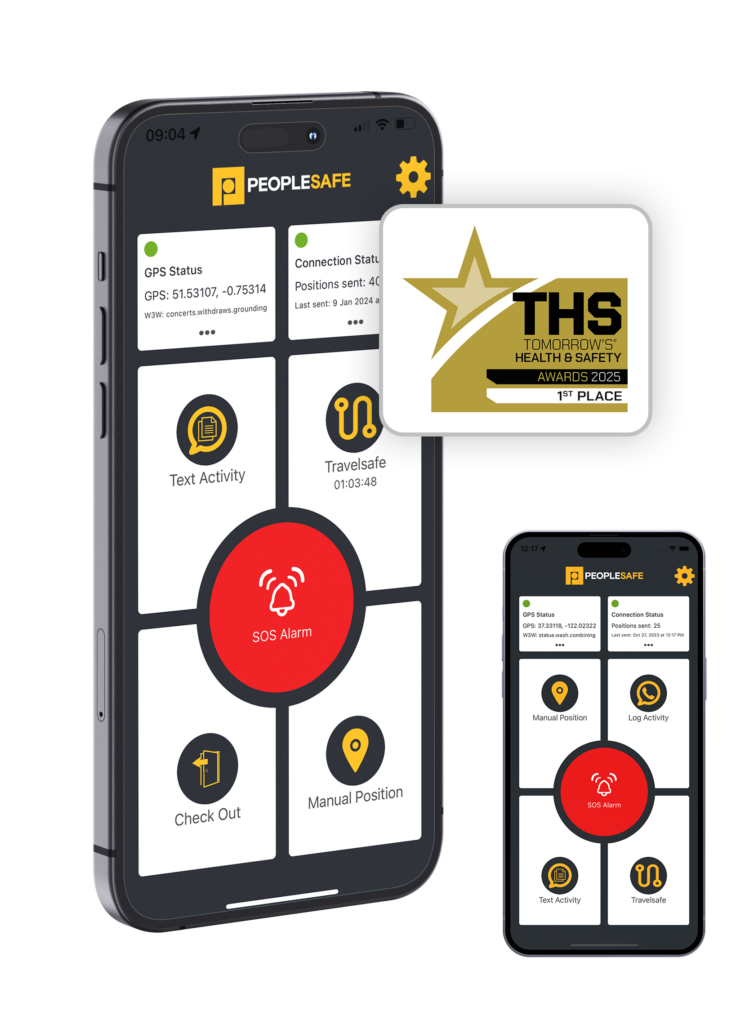Employer Responsibilities: International Business Travel
With businesses becoming increasingly connected across the globe and the growth of hybrid working models, the number of employees travelling internationally for work continues to rise. It is estimated that international business travel has increased by 25% in the last 10 years – despite the global pandemic – and is set to increase further.
If your business has any employees who travel abroad for work, no matter the duration of the travel, it’s your legal and moral responsibility to have a plan in place to protect them. Business travel includes any employees travelling for activities such as:
- for a conference, event, or exhibition,
- for a business meeting either with customers, prospects, or suppliers,
- to provide services (e.g. entertainment), or
- for work-related training.
Despite 8 out of 10 travellers feeling as though their personal safety could be threatened while abroad, a study of frequent travellers found that only 31% considered their own safety as the most important factor when taking a business trip and over half (54%) believed that safety is not their company’s top priority.
Employer’s legal responsibilities for employee travel
The Health and Safety at Work Act 1974 requires employers to take all reasonable steps to ensure the health, safety and wellbeing of employees. This includes protecting staff when they are required to travel for work: throughout the UK and internationally.
Before a work trip takes place, organisations are legally required to conduct a business travel risk assessment. This should involve researching and evaluating the risks associated with travelling for work, as well as the specific risks involved with the employee’s destination. As part of this risk assessment, employers are also required to have a plan in place to protect their employees should any of these identified risks occur.
Additionally, under UK common law, employers have a duty to take reasonable care of their employees. Within the context of travel, this means that employers have a legal obligation to implement all reasonably practical steps to reduce the risks involved with employees travelling for business, no matter where they are.
In reference to employers’ duty of care, IOSH commented “This duty of care continues to exist when their employees are sent to work in other jurisdictions, either on a short-term basis or as part of a longer-term arrangement” and may also cover “a worker’s travel arrangements to or from work on a day-to-day basis while working abroad” as well as “the employee’s safety while in transit”.
In order to ensure your business is fulfilling its duty of care, it is recommended to devise a duty of care plan alongside conducting your risk assessment, as this can help to highlight areas that may have been missed. The duty of care policy should consider risks such as:
- How many hours the employees are working while travelling
- The safety of employees in the location they are visiting
- The training provided to employees on safe practices
- The mental wellbeing of employees while travelling
Overseas business travel guidance
Further to the legislation imposed on organisations, specific work-related travel guidance has been created to help employers ensure they are fully protecting their workers while travelling.
Working in collaboration, the International SOS and the British Standards Institution (BSI) published PAS3001:2016 Travelling for Work, which according to the BSI “has been developed to give organisations a tool to help them protect their mobile workforce and themselves”. This document gives recommendations on business responsibility in respect of the health, safety and security of individuals travelling for work.
This publication notes that workers may be travelling between relatively safe and high-risk locations, but that “even a relatively safe destination can rapidly degenerate into a high-risk destination due to health, safety, security, political or social reasons, or natural disasters”.
To combat this and protect employees, this document states that organisations should:
- Develop and maintain systems and arrangements to inform, protect and assist the traveller
- Assess the need for, and provide training and information to the traveller if necessary
- Define the role of external assistance providers in helping the organisation manage travel safety, health and security
- Maintain a system to report on the performance of travel, safety, health and security
Similarly, the IOSH and the International SOS produced a guidance document: Managing the Safety, Health and Security of Mobile Workers: An Occupational Safety and Health Practitioner’s Guide.
This document aims to enable organisations to translate the duty of care “into policies, processes and actions that will protect your workforce and thereby not only support your business aims but also improve your organisation’s reputation and credibility”.
Both documents make reference to the need to have a crisis management procedure in place, stating “Any organisation should have global as well as local arrangements in place for a crisis or an emergency.”
Fulfilling your international travel duty
Prevention is key in upholding both your moral and legal duty and in safeguarding your team. Here is our advice for creating a comprehensive safe travel procedure:
1. Assess your current travel risk assessment
Having a thorough travel risk assessment in place will identify any anticipated risks and help you implement measures to protect your employees from these risks. If you already have a travel risk assessment in place, this should be reviewed at least annually and any time an incident occurs.
A travel risk assessment is integral to achieving duty of care obligations. The goal of the risk assessment is to identify any threats that an employee could face whilst travelling; making it possible to identify and manage the potential risks before they happen. Completing a specific travel risk assessment demonstrates you and the traveller have done some form of due diligence prior to the activity taking place.
Travel risks are constantly changing, and the assessment needs to cover everything from missing a flight to a global pandemic. Recommended vaccines, how and where to access medical treatment, employee medical details and emergency service contact numbers should all be considered. It may also be appropriate to brief employees on cultural norms before visiting new destinations.
Risk factors faced by specific groups also need to be taken into account. For example, a study by the Global Business Travel Association (GBTA) and AIG found that 83% of female business travellers reported a safety concern or incident in the past year.
The best intelligence can often come from consulting with employees who frequently travel and have first-hand experience with incidents while travelling.
2. Employee travel safety contingency plans
Incorporate contingencies into your general travel policy, as well as into the plan for specific trips. Employees should know that there is a backup plan for emergencies that is reliable and up to date. Most importantly, this plan should contain information on emergency services and where the nearest embassy or evacuation point is for foreign nationals.
There are lots of opportunities for things to go wrong when an employee is travelling for business, but there should be as system in place for if any of these incidents occur. Some common risks faced by travellers include:
- Becoming injured or ill and requiring medical attention
- Being attacked or robbed
- Misplacing important documentation, such as a passport
- Missing a flight
- Not having a way to contact emergency services
3. Implement an international personal safety service
Even with proper planning and procedures in place, not all risks can be mitigated. Having an international personal safety service in place will allow employees to access help in the event that an incident occurs while travelling abroad.
Peoplesafe’s Global Response is an escalation service for at-risk employees no matter where they are in the world. Using Global Response, employees can raise an alarm via the SOS App, which will be received by the Peoplesafe ARC. The Alarm Controller will capture all of the necessary information and report the incident to the user’s designated escalation contact, following the Global Response alarm process established during setup, who will then handle the incident. The alarm will only be closed once the Controller is able to confirm the user’s safety.
Alternatively, employees travelling within Europe and Mexico can benefit from Peoplesafe’s Eurowatch service – also available via the Peoplesafe Pro App. Eurowatch provides employees with 24-hour access to police via the Peoplesafe ARC and our partnership with Teletrac Navman, meaning there is no need for employees to be able to speak the local language in order to get help. Each country has a local response service which Peoplesafe will liaise with directly.
When an SOS alarm is activated via the lone worker phone app, the Peoplesafe ARC receives an alert with the user’s profile and GPS position. A two-way audio communication channel is also opened allowing the ARC Controller to gather information about the situation in progress. If a local service is required, the Controller will contact Eurowatch to raise an incident which will then be passed to the National Service Provider (NSP) in the country of incident who will be able to dispatch emergency services if necessary.








